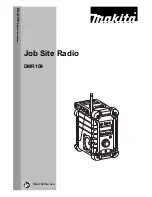
RF Exposure Information
WARNING!
Read this information before using the radio. In August 1996 the Federal Communications Commission (FCC) of
the United States with its action in Report and Order FCC 96-326 adopted an updated safety standard for human exposure to
radio frequency electromagnetic energy emitted by FCC regulated transmitters.
Those guidelines are consistent with the safety standard previously set by both U.S. and international standards bodies. The
design of the radio complies with the FCC guidelines and these international standards.
Never allow children to operate the radio without adult supervision and the knowledge of the following guidelines.
This device complies with Part 15 of the FCC Rules. Operation is subject to the condition that this device does not cause
harmful interference.
For a transmitter that can only be operated with an FCC license,warningss concerning compliance with applicable licensing
requirements and information concerning license applianction procedures.
Our radio generators RF electromagnetic energy during transmit mode.
This radio is designed for and classified as“Occupational Use Only”,meaning it must be used only during the course of
employment by individuals aware of the hazards,and the ways To Minimize Such hazards.
This radio is NOT intended for use by the“General Population” in an uncontrolled environment. This radio has been tested
and complies with the FCC RF exposure limits for“Occupational Use Only”. Inaddition, our radio complies with the following
Standards and Guidelines with regard to RF energy and electromagnetic energy levels and evaluation of such levels for
exposure to humans:
---IEEE Std. 1528:2013 and KDB447498, Evaluating Compliance with FCC Guidelines for Human Exposure to Radio Frequency
Electromagnetic Fields.
---American National Standards Institute (C95.1-1992), IEEE Standard for Safety Levels with Respect to Human Exposure to
Radio Frequency Electromagnetic Fields, 3 kHz to 300 GHz.
---American National Standards Institute (C95.3-1992), IEEE Recommended Practice for the Measurement of Potentially







































